About this blog: Mangyu Monastery is one of the oldest monasteries in Ladakh. Located in Sham Valley, the Gompa belongs to the early period monasteries built between 1000 – 1300 AD. We visited Mangyu Gompa on our last trip to Ladakh. This travel blog shares our experience and a little history and architecture of the monastery.
It was a bright and sunny day when we arrived at Mangyu Monastery. After being stranded in snow somewhere between Sumdo and Tso Moriri for 2 days, the sun over our heads was quite a relief. Parking our car at the village, we started our hiking towards Mangyu Gompa located at Sham Valley in Ladakh.

Ladakh contains some gorgeous monasteries and gompas where we can get a glimpse of the medieval Tibetan culture. These places can be quite interesting for culture enthusiasts. Most travellers and tourists visit most of the popular gompas of the region. But there are so many hidden gems spread throughout Ladakh.
In our recent trip to Ladakh, we had explored a couple of offbeat attractions in Ladakh in the Sham Valley. On this trip, we explored Mangyu Gompa, Saspol Caves and the Basgo Monastery (though Basgo is now quite popular among tourists).
Mangyu Monastery

Mangyu Monastery or Gompa is one of the most ancient and historic monasteries in Ladakh. The monastery is almost as old as Alchi Monastery, the earliest structures dating back to the 12th or early 13th century. Mangyu Monastery is also similar to Alchi Gompa in some iconographic features. However, unlike Alchi Monastery, Mangyu hardly gets any visitors. This monastery is usually overlooked by the visitors exploring the sites in Sham Valley, usually falling between Leh and Lamayuru Monastery.

Also, unlike Alchi Gompa, Mangyu monastery is still used as a place of worship. The monastery follows the Nyingmapa order, an old school of Tibetan Buddhism.
Where is Mangyu Gompa Located?

Mangyu Monastery lies within Mangyu village, located about 70 km from Leh town. There is a 7 km link road from the Srinagar-Leh highway that takes you to Mangyu. The scenery along the Leh-Srinagar Highway is absolutely gorgeous. Rugged terrains, pitch black roads make driving along the highway an absolute pleasure. The link road, though narrow and rough, is also quite stunning. The road winds up a narrow gorge before opening up to the village.

We did find one signboard along the road towards Mangyu. But there were no other tourists. We were the only ones visiting the place. Well, I was quite thrilled.

I felt as if I was on the verge of discovering something new. As if I was exploring a part of Ladakh that very few know. After our Zanskar trip, visiting another offbeat destination does all this to your mind and heart!
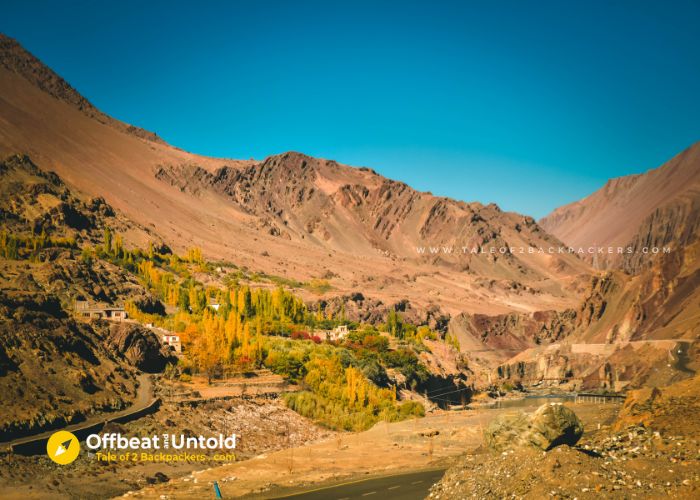
Like Alchi Gompa, the monastery complex lies within Mangyu village. This is one of the distinguishing features of the early Ladakhi monasteries – they were usually located within the village as opposed to the later monasteries that are usually perched on top of a mountain.
Early Period Monasteries and Their Architecture
The gompas or monasteries were and still today are centres of spiritual training for monks as well as education. The term early period Monasteries is mainly used to describe the monasteries built in Ladakh and Guge (Tibet) during the period between 1000 AD to 1300 AD. These monasteries usually have a hybrid style fusing Indian architectural style, decorative elements from Kashmir and construction techniques from Tibet.

Most of the religious structures built in this time were constructed on relatively flat ground and are spread out instead of rising up. These temples are rich in frescos, stucco and wooden sculptures, motifs and ornamentations. Mandalas are a prominent figure in the temples of this period.

Another distinctive feature is the presence of the temple of Vairocana. All these features are common in Alchi, Mangyu, Nako and Tabo monasteries that are built during this period.
Mangyu Monastery Complex
Mangyu village is situated by the side of the Indus River. Small and beautiful, the village has a few houses on the upper part. It is where the monastery is also located here. Beyond, you can see the terraces of farmland. It was October when we visited and we were greeted with fall colours all over.

We parked our car in the village and walked through a narrow road to the monastery passing by a few houses and grocery shops. Walking for 5 minutes, we reached the monastery complex.

The Gompa has two Dukhangs, situated adjacent to each other. They are flanked by two chapels on either side. In front of the complex is an open courtyard.
We were disappointed to see the monastery closed when we arrived. Fortunately, we also met a monk in the courtyard and expressed our desire to visit the temples to him. He got the keys and opened the wooden doors for us to enter. And once we entered the main temple and the chapels, we were stunned! They contained such beautiful and rare pieces of art.
Vairocana Temple at Mangyu Monastery

The Dukhang on the right side is dedicated to Vairocana and is known as the Vairocana Temple. It contains an elaborate composition of clay structures against the back wall and a four-headed statue of Vairocana is seated in the centre.

The Vairocana Temple is painted symmetrically on the right and left walls with one large central mandala flanked by smaller mandalas containing an entourage of subsidiary deities and other divinities.


Most of the original murals had barely survived. Most of the paintings look too well preserved to be an original mural. Nevertheless, what we saw was enough to make us wonder about the quality and the intricacy of the original artworks.

Taking a careful look at the mandalas, we could discern one dedicated to Shakyamuni and another to Vairocana. There was another mandala dedicated to some fierce deities and another one was of the fierce nagas (serpent gods). Serpent gods were usually painted to induce rainfall.

Above the entrance of the Vairocana Temple, there is a painting of the Mahakal. From th elook it seems that the this mural was restored in recent time.

Avalokitesvara Temple

The Dukhang or temple complex on the left contained a painting of Shakyamuni along with his disciples. However, presently, the temple is named after the eleven-headed Avalokitesvara, whose statue is inside the temple.

Chapels at the Mangyu Monastery
After admiring the two Dukhangs, we decided to enter the chapels. We were not really prepared for what we saw when we entered the chapel on the right. The chapel contained a gigantic statue of the Maitreya Buddha having 4 arms. We had seen huge Buddha statues before as well. The one in Tawang Monastery was towering. But never did we see one that was cramped in such a small space. You literally have to straighten and look up to have a glimpse of the face. The darkness also makes the ambience a bit intimidating.
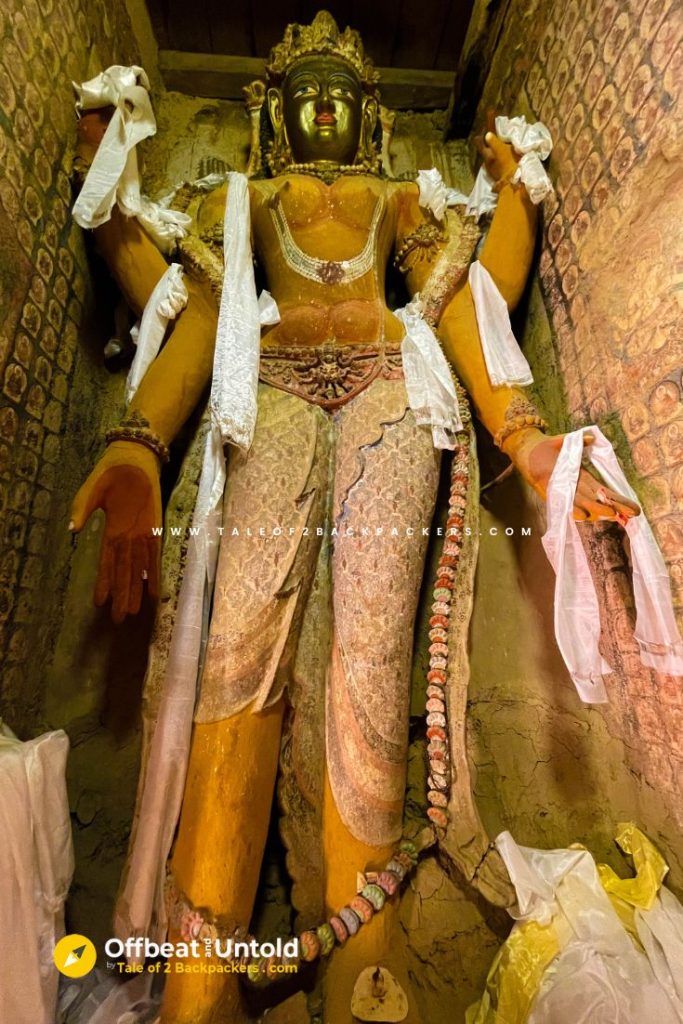
Might be because of lack of space and darkness, we were impacted by the scale of the two-storeyed Maitreya statue!
The walls of the chapel were covered with paintings of small buddhas. But most of them have faded with time.

We simply stared at the yellow coloured Maitreya statue for a few minutes before going to the other chapel.
The chapel on the left contains another gigantic two-armed statue of the Maitreya, though not as striking as the other. The chapel is a bit more spacious than the other one.

Behind the Maitreya, there are some delightful art works of the Indo-Tibetan period. The murals and paintings in this room were also considerably damaged.
Stupas and the Complex
There is also a white stupa belonging to the same period as the monastery.

After our awe-inspiring visit to the Dukhangs and chapels, we went on to explore the complex. It was clear that the monastery complex had already undergone an extensive conservation effort, and needed more. The conservation work at Mangyu Monastery is carried out by the Architectural and Material Heritage divisions of the Delhi chapter of Indian National Trust for Art and Cultural Heritage (INTACH).

We took the way to the left and found a flight of steps. There were prayer wheels on the walls as found in the monasteries of Ladakh. Taking the steps we came to a room that contained a huge prayer wheel. Further down, there was a signboard pointing towards “Guru Lhakhang”.

We followed the directions and found another temple. But that was closed for renovation. We also saw several white coloured stupas as well. There was another stupa near the J & K Bank having three chortens of different colours.
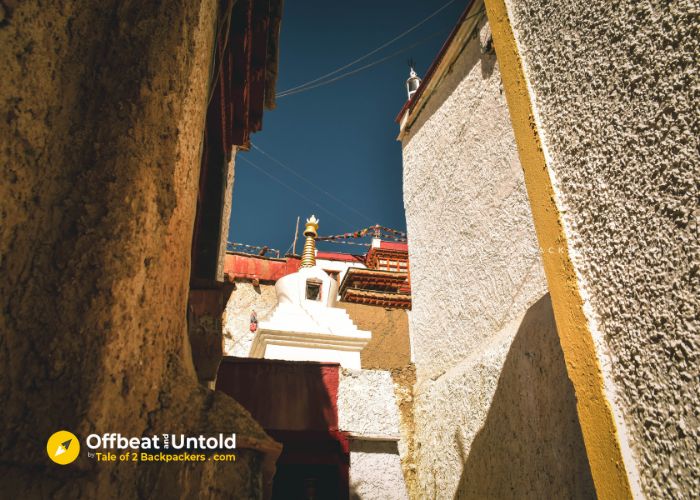

After exploring this exceptionally beautiful place, we went back towards our car. As we walked down, we found the signboard of a homestay. On asking they said that it was not yet functional. But we were welcome to stay there! After spending some illuminating time there, we were ready to start for our destination. For we were exploring some hidden gems of Sham Valley!

In Conclusion
Ladakh has always been a panacea for travellers with its stark and beautiful vistas. But the place is also rich culturally. Alchi and Mangyu Monastery, both belong to an earlier period of Tibetan Buddhism. It can be seen from the structure and built of the monasteries, their iconographies and artwork. It is a great experience to explore this side of Ladakh. And hopefully we will do so more in the coming times.
A Few More Photograohs of Mangyu Monastery
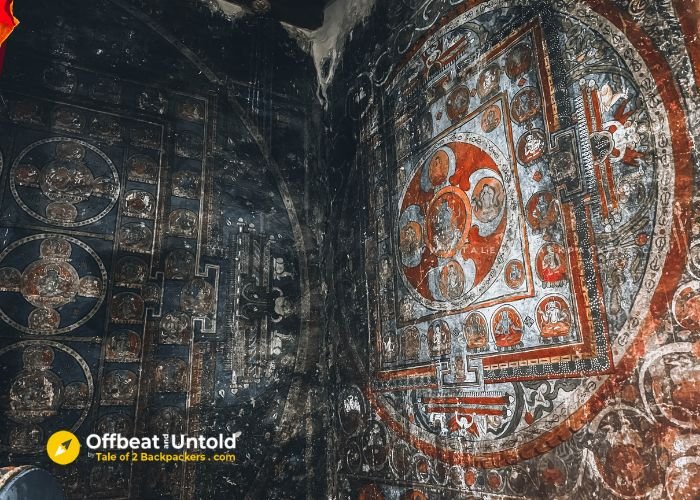



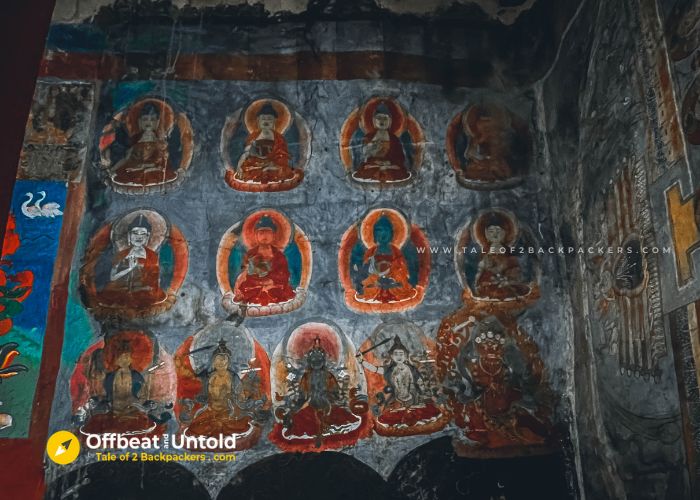






Hope you liked this post about Mangue Monastery in Sham Valley. Please let us know your thoughts in comment below. Would you like to visit there? Are you planning a trip to Ladakh?
If you find this post useful, please share it with your family, friends and neighbours.
Pin it for a later read!
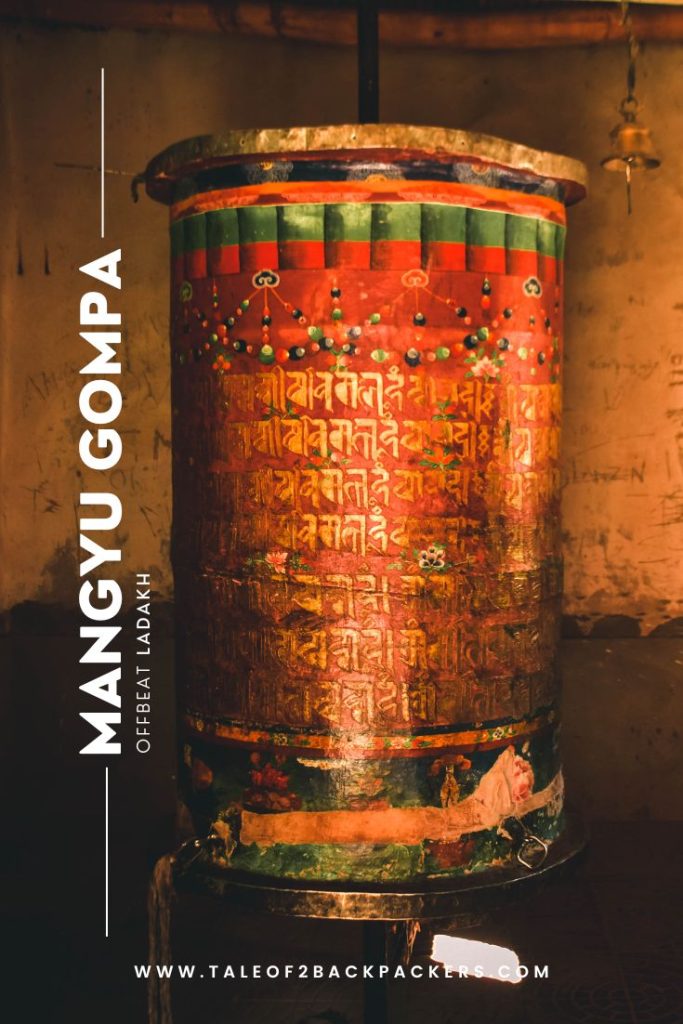




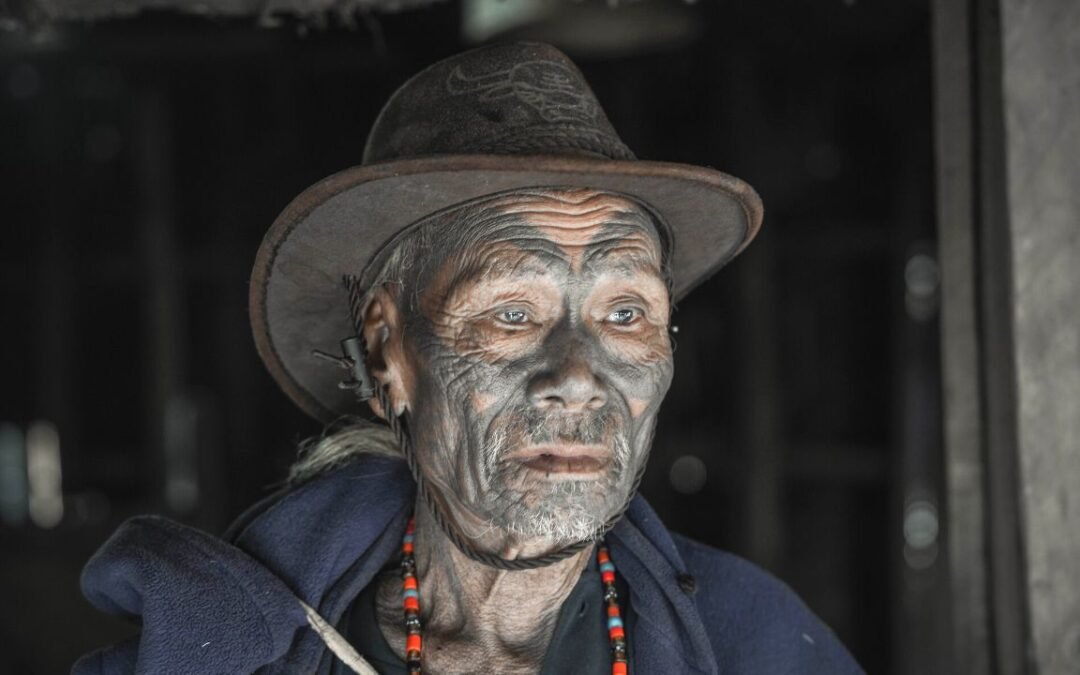
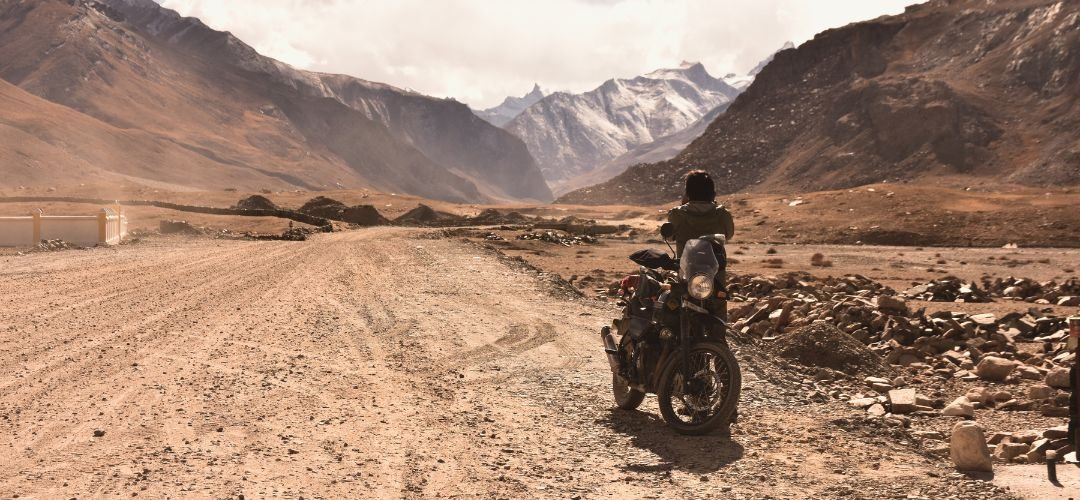
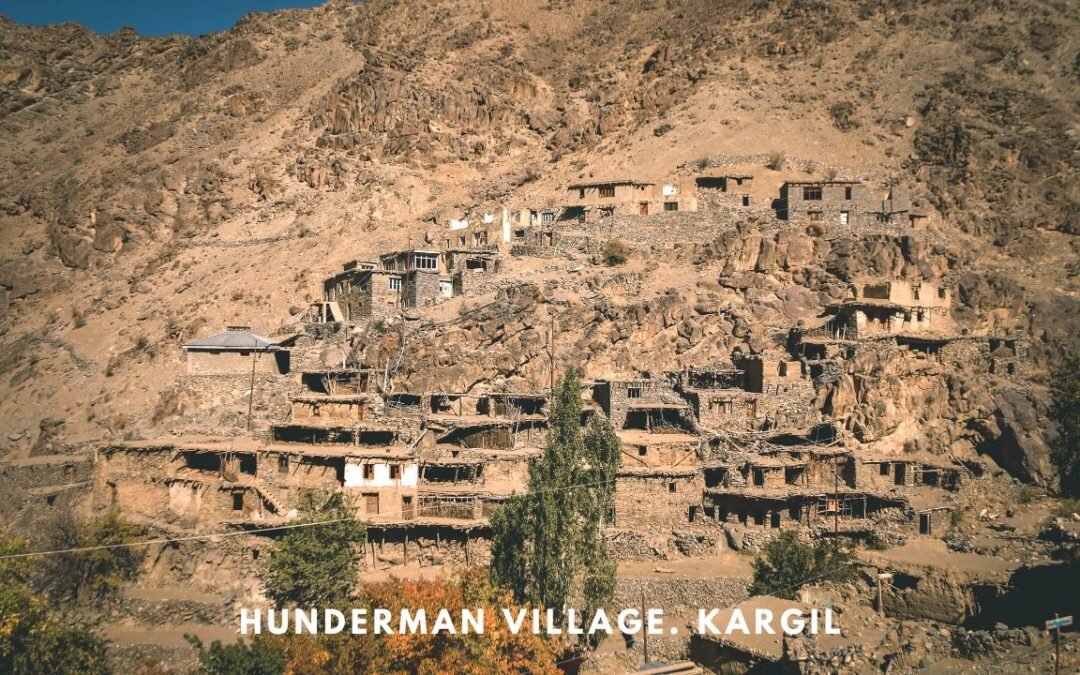
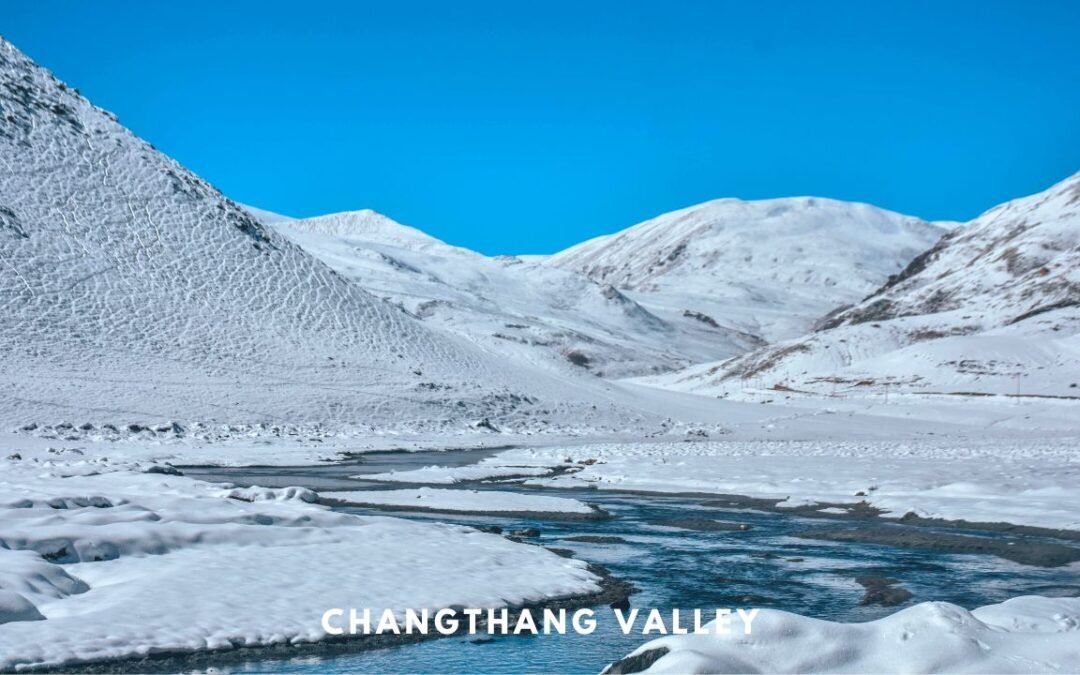
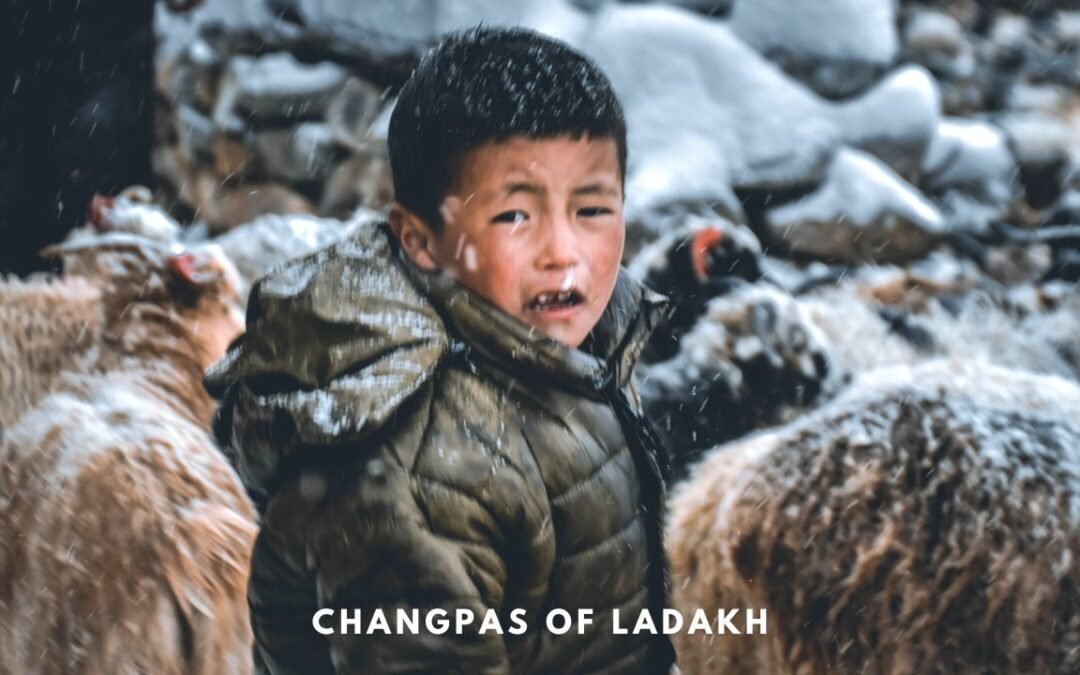


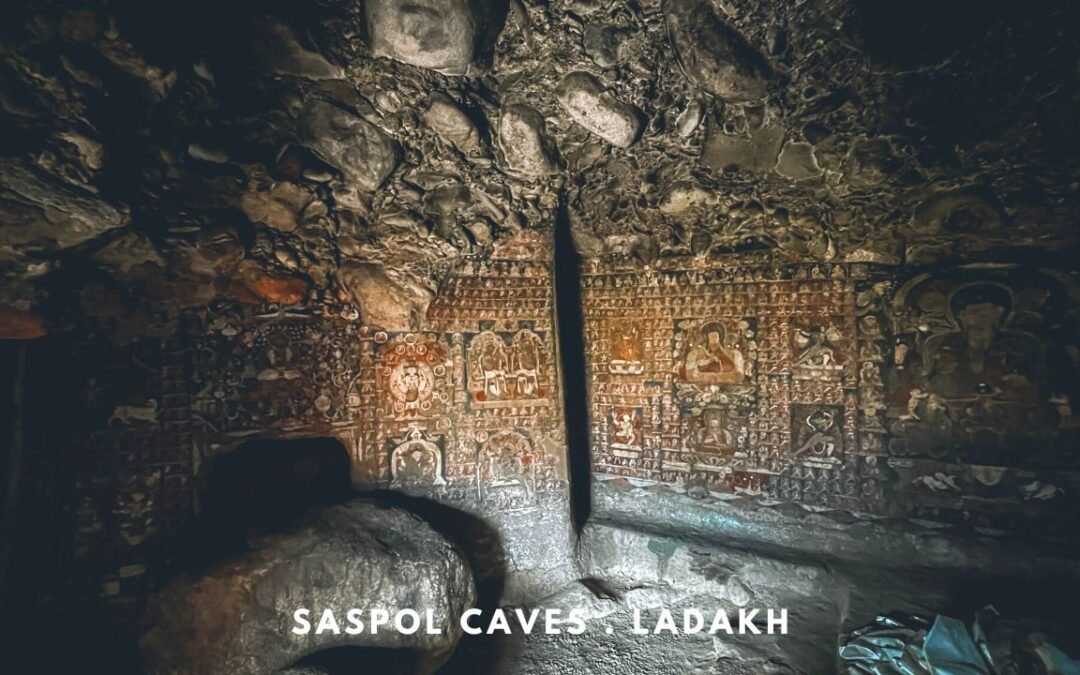
0 Comments